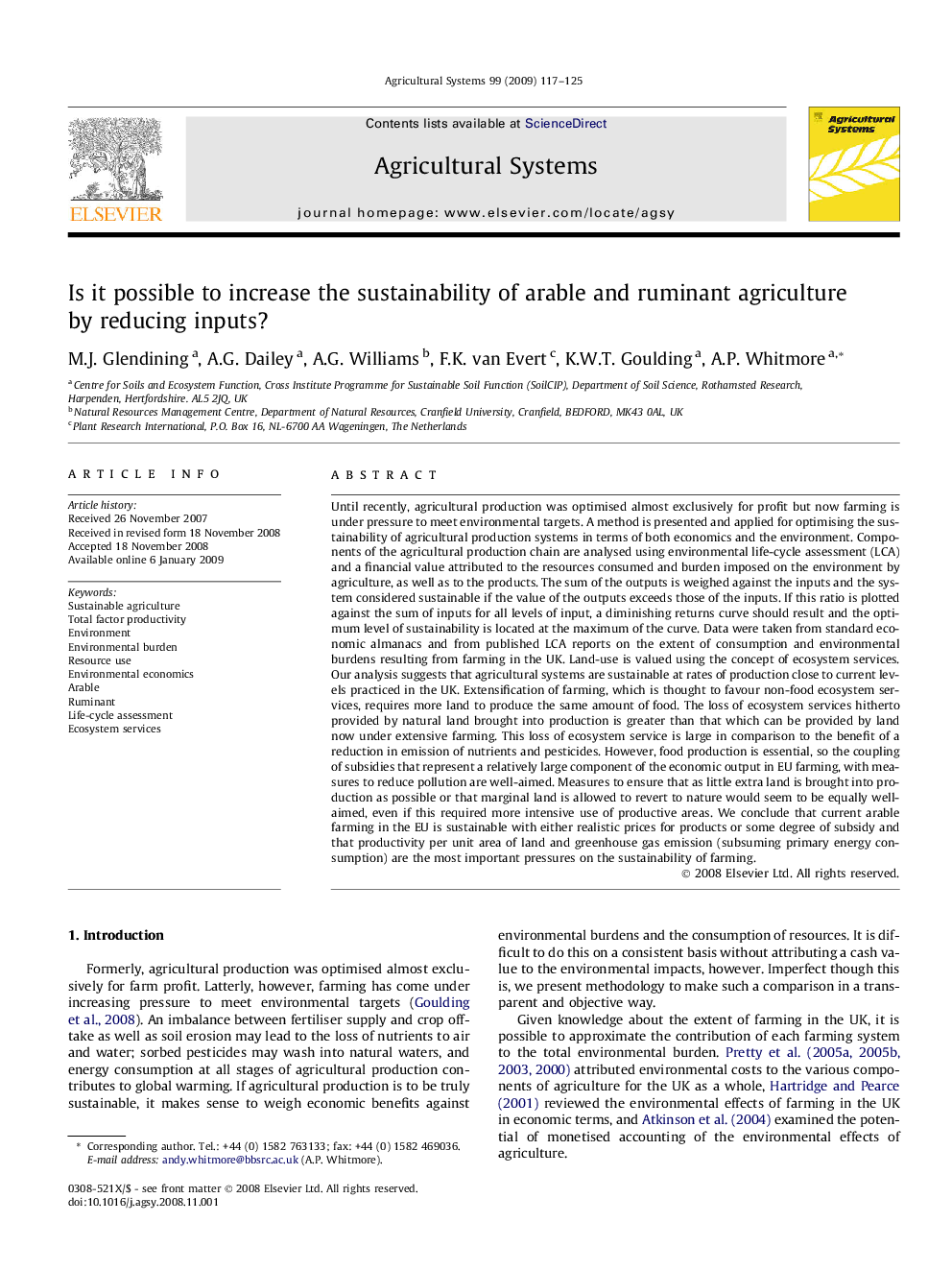| کد مقاله | کد نشریه | سال انتشار | مقاله انگلیسی | نسخه تمام متن |
|---|---|---|---|---|
| 4491743 | 1623267 | 2009 | 9 صفحه PDF | دانلود رایگان |

Until recently, agricultural production was optimised almost exclusively for profit but now farming is under pressure to meet environmental targets. A method is presented and applied for optimising the sustainability of agricultural production systems in terms of both economics and the environment. Components of the agricultural production chain are analysed using environmental life-cycle assessment (LCA) and a financial value attributed to the resources consumed and burden imposed on the environment by agriculture, as well as to the products. The sum of the outputs is weighed against the inputs and the system considered sustainable if the value of the outputs exceeds those of the inputs. If this ratio is plotted against the sum of inputs for all levels of input, a diminishing returns curve should result and the optimum level of sustainability is located at the maximum of the curve. Data were taken from standard economic almanacs and from published LCA reports on the extent of consumption and environmental burdens resulting from farming in the UK. Land-use is valued using the concept of ecosystem services. Our analysis suggests that agricultural systems are sustainable at rates of production close to current levels practiced in the UK. Extensification of farming, which is thought to favour non-food ecosystem services, requires more land to produce the same amount of food. The loss of ecosystem services hitherto provided by natural land brought into production is greater than that which can be provided by land now under extensive farming. This loss of ecosystem service is large in comparison to the benefit of a reduction in emission of nutrients and pesticides. However, food production is essential, so the coupling of subsidies that represent a relatively large component of the economic output in EU farming, with measures to reduce pollution are well-aimed. Measures to ensure that as little extra land is brought into production as possible or that marginal land is allowed to revert to nature would seem to be equally well-aimed, even if this required more intensive use of productive areas. We conclude that current arable farming in the EU is sustainable with either realistic prices for products or some degree of subsidy and that productivity per unit area of land and greenhouse gas emission (subsuming primary energy consumption) are the most important pressures on the sustainability of farming.
Journal: Agricultural Systems - Volume 99, Issues 2–3, February 2009, Pages 117–125